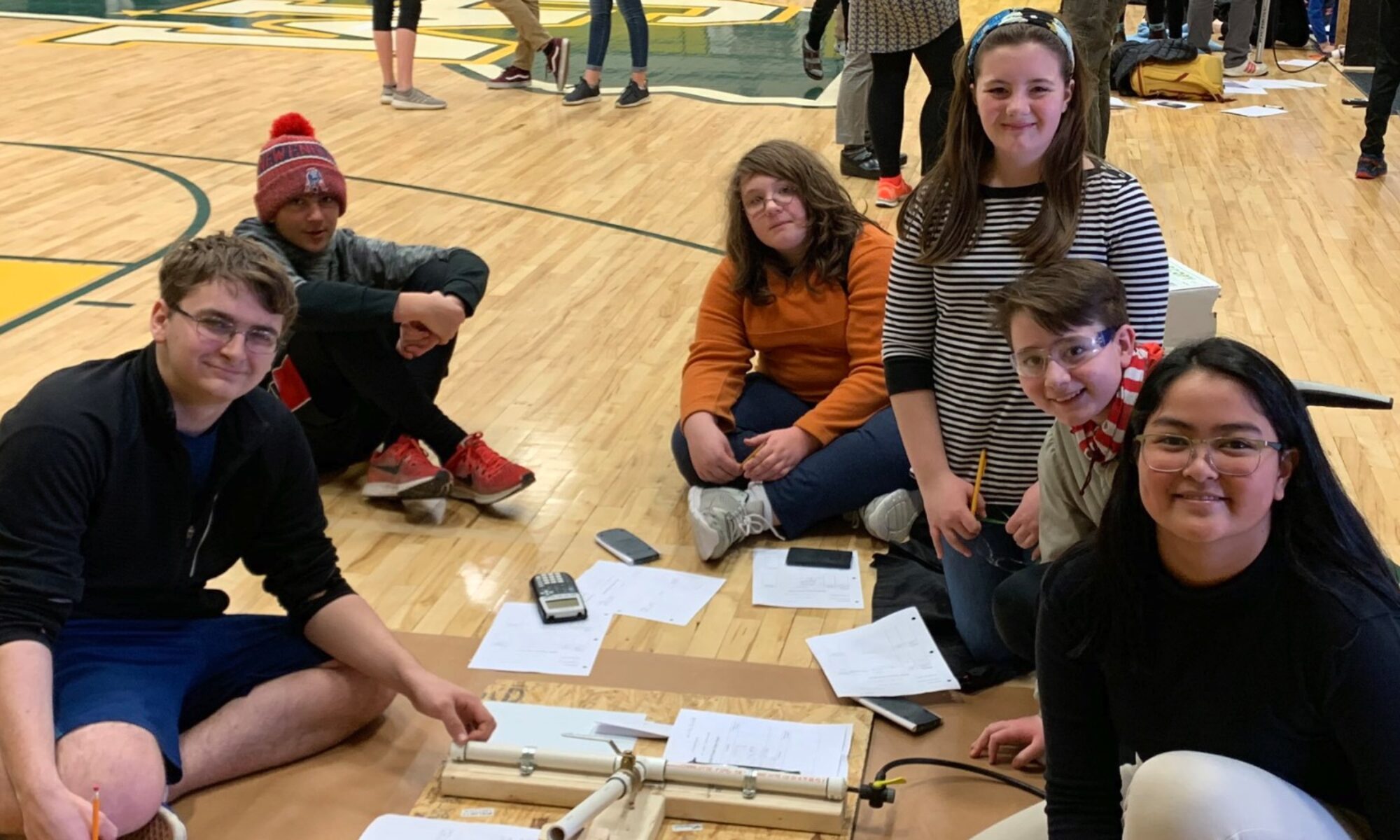The Maker Movement & Transferable Skills, Part 2
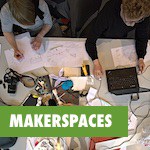 We’re looking at how maker-centered learning provides opportunities for students to develop the Vermont Agency of Education’s five Transferable Skills, starting with Clear and Effective Communication.
We’re looking at how maker-centered learning provides opportunities for students to develop the Vermont Agency of Education’s five Transferable Skills, starting with Clear and Effective Communication.
Today we continue our series with more examples. Our mobile making lab’s visits brought forth evidence of students taking charge of their learning. Students became more and more self-directed as their capacity and confidence around making grew. This was particularly evident during EMMA’s visits to the so-called “Northeast Kingdom,” the most rural area of Vermont.
EMMA first brought coding and making to the Northeast Kingdom as part of an area summer camp
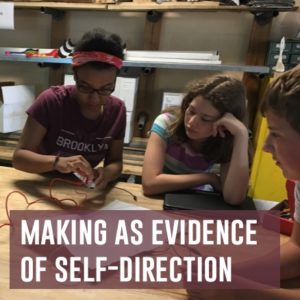 At TechSavvy Girls Camp 2016, 42 girls learned to code using Code.org, unplugged activities, codeable robots, Scratch with Makey Makey, and VidCode.
At TechSavvy Girls Camp 2016, 42 girls learned to code using Code.org, unplugged activities, codeable robots, Scratch with Makey Makey, and VidCode.
Excited to use their new making and coding skills, students at North Country Union Junior High School, in Derby VT, approached faculty at their school about adding making as an expanded opportunity during the school year.
Matt MacFarlane, a new and enthusiastic technology and design teacher was eager to learn more and offered his room. The tools available and layout of the tech ed and design room provided a great place for students to make.
This fall, EMMA returned to North Country Union Junior High School to help students and teachers learn how to use code with the Makey Makey circuit board to improve their CO2 car projects and add voice to storytelling projects.
North Country Junior High Students exploring and discussing how the Makey Makey works.
The Makey Makey circuit board provides an easy entryway into making and coding
After a short lesson on using Scratch and Makey Makey, students were quickly brainstorming problems they could solve with code!
Since they were in the middle of designing CO2 cars in their Tech Ed class, the discussion quickly lead to a problem with the track system used to test their CO2 cars.
“It’s hard to release the car and start the timer at the same time”
explained one student. This lead to a brainstorming session on how they could improve the system with their new understanding of code and circuits.
“What if the timer automatically started the minute the car left the gate and stopped when the car crossed the finish line?”
This question lead to brainstorming ideas for using sensors and switches that would trigger the code to start and stop a timer.
“And can we have fireworks when the car crosses the finish line?”
Everyone laughed, but the idea was not dismissed. The discussion continued with ideas for safe ways to simulate fireworks.
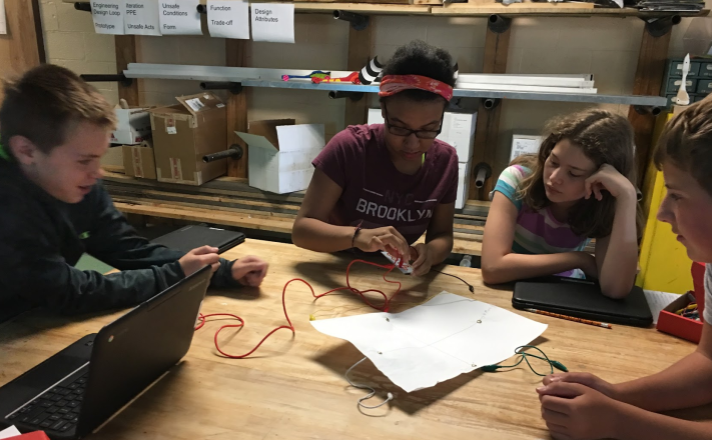
Within an hour of participating in a coding lesson that increased their maker capacity, students had an increased sensitivity to the design of objects and an inclination to CREATE/MAKE a solution to a problem that had been part of their current approach to designing CO2 cars. They were taking charge of their learning and becoming more and more self-directed as their capacity and confidence around making grew.
Making at the Champlain Valley Mini Maker Faire
EMMA got the chance to witness even more evidence of self-directed learning as some of the students used their own time and space to create an interactive exhibit for the Champlain Valley Mini Maker Faire.
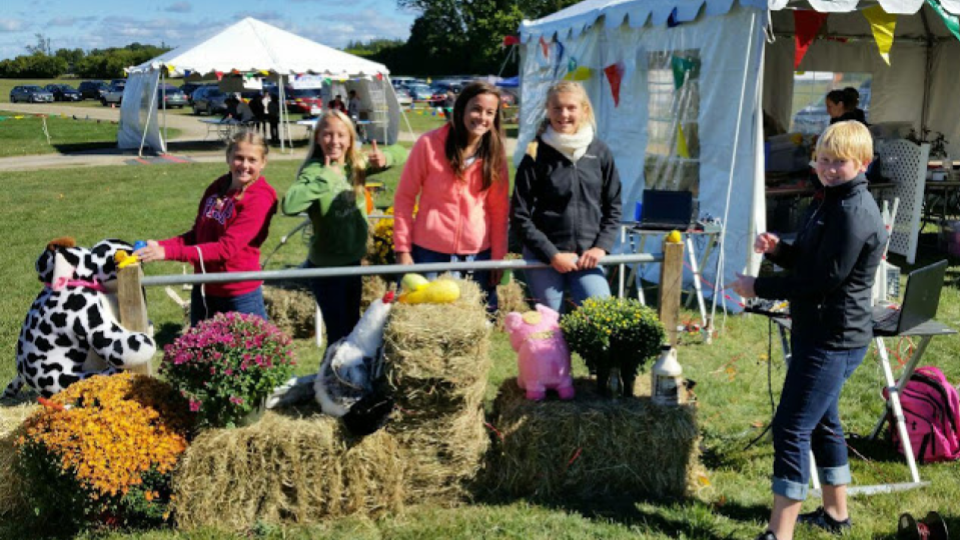
The Interactive Audible Garden Project (controlled with a Makey Makey and Scratch) included a homemade railing that invited you to interact with talking chrysanthemums and pumpkins, and a stuffed chicken that squealed when you touched her eggs.
The students gathered at their homes to design, build, and code the project. They transported it to the Champlain Mini Maker Faire where it was a big hit. Including this project on their personal learning portfolios would certainly provide evidence of self-directed learning.
Once students started to gain confidence in their capacity to make, their inclination to make increased.
And they frequently identified, managed, and assessed new opportunities to make.
For example, some students saw an opportunity to use their maker skills to upgrade a traditional history fair poster to a talking poster using Makey Makey. Other students experimented with adding interactive mixed media elements to a schoolwide ancestory project using code and the Makey Makey.
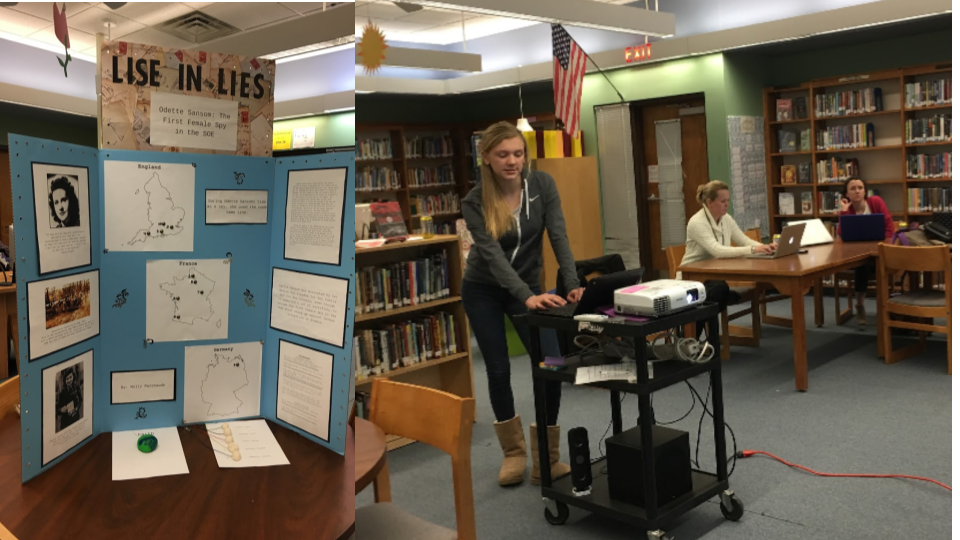
These students are exhibiting so many aspects of the transferable skill of self-direction and its performance indicators. Making provides students with the opportunity to “apply knowledge in new contexts” as they explore new tools and use a design perspective to analyze and create. Making exposes students to “new opportunities” that they can incorporate into their goals and often produces hands-on learning that students can draw upon as they “integrate knowledge from a variety of sources.” Perhaps most importantly, as students build their agency, they are better equipped to “demonstrate initiative and responsibility for learning.”
In the case of the North Country Junior High students profiled here, their accomplishments weren’t merely self-directed. We’d go as far as to say that they are trendsetters and change-makers in their schools.
